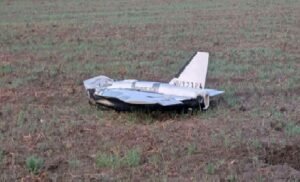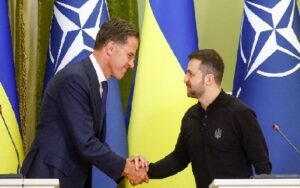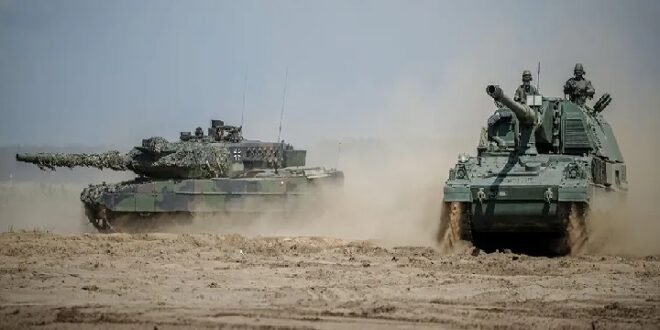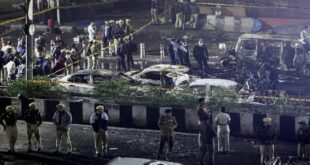14-10-2025
BRUSSELS: For decades, the North Atlantic Treaty Organization (NATO) prepared for war, confident in its advantage over any adversary. Its member states invested heavily in state-of-the-art weapons. Stealth aircraft, precision weaponry, secretive submarines and city-sized aircraft carriers stood as the guardians of the West.
 This power appeared unshakable until recently. On September 10, during another massive Russian aerial attack on Ukraine, more than 20 Russian drones crossed into neighbouring Poland. The NATO member had to scramble multimillion-euro military equipment, F-16 and F-35 fighter jets, military helicopters and Patriot surface-to-air missile systems, in order to shoot down potential threats. Several drones were shot down, including three Shaheds and several cheaply made foam dummies.
This power appeared unshakable until recently. On September 10, during another massive Russian aerial attack on Ukraine, more than 20 Russian drones crossed into neighbouring Poland. The NATO member had to scramble multimillion-euro military equipment, F-16 and F-35 fighter jets, military helicopters and Patriot surface-to-air missile systems, in order to shoot down potential threats. Several drones were shot down, including three Shaheds and several cheaply made foam dummies.
That interception operation was not only costly, but it also busted the myth of Western military might. Trillions of dollars in investment in the military industrial complex could not protect NATO borders from two dozen inexpensive drones.
In the following days, unidentified drones shut down airports in Norway, Denmark and Germany, costing airlines millions of euros; in Belgium, drones were also spotted near a military base.
The European media is full of stories about unidentifiable drones, air defences, and speculation over possible directions of a Russian strike. Romania? Poland? The Baltic States? Along the entire eastern border of the European Union, there is no place where the population feels truly safe.
It is hard to imagine the scale of chaos should Russian forces actually go on the offensive. How many countries would act under NATO’s Article 5, which allows for collective action against a military threat against a single member, and how swiftly? By then, where would the Russian forces be?
The central question remains: can the North Atlantic alliance and its modern military technology stop such an advance?
 The war in Ukraine has demonstrated that the answer is no. Russian forces display a persistence in combat possible only under dictatorial regimes, where soldiers are indoctrinated and fear their own command more than the enemy.
The war in Ukraine has demonstrated that the answer is no. Russian forces display a persistence in combat possible only under dictatorial regimes, where soldiers are indoctrinated and fear their own command more than the enemy.
Modern methods of warfare against armies modelled on World Wars I and II are not nearly as effective as generals once claimed. One just has to look at the front line in Ukraine and the constantly evolving military strategies.
Faced with a formidable military power with seemingly unlimited budget and unconstrained military reach, the Ukrainians had to adapt quickly. They began deploying drones against Russian armor, but the enemy did not remain idle against these attacks. It started constructing improvised metal cages over tank turrets to absorb explosions. Precision strikes with Army Tactical Missile Systems (ATACMS) cluster munitions taught them to disperse ammunition in small points, avoiding concentrations of troops and equipment.
Drones on both sides monitor the front line, but it is scorched earth: no movement of tanks or infantry can be seen. Russian advances proceed covertly, mostly at night, with two- or three-man teams crossing bombardment zones, gradually assembling for surprise attacks. Troops on both sides are dug deep underground; what is visible is only the casualty count, several thousand each week.
Is Europe prepared for this type of war? Are NATO soldiers capable of surviving for weeks in foxholes and ruins, without communicating, to avoid detection and destruction? A survey conducted by Gallup last year suggests the answer is no. In Poland, 45 percent of respondents said they would voluntarily defend their country if war threatened. In Spain, the figure was 29 percent; in Germany, only 23 percent; in Italy, a meagre 14 percent; the EU average was 32 percent. (Int’l News Desk)
 Pressmediaofindia
Pressmediaofindia




